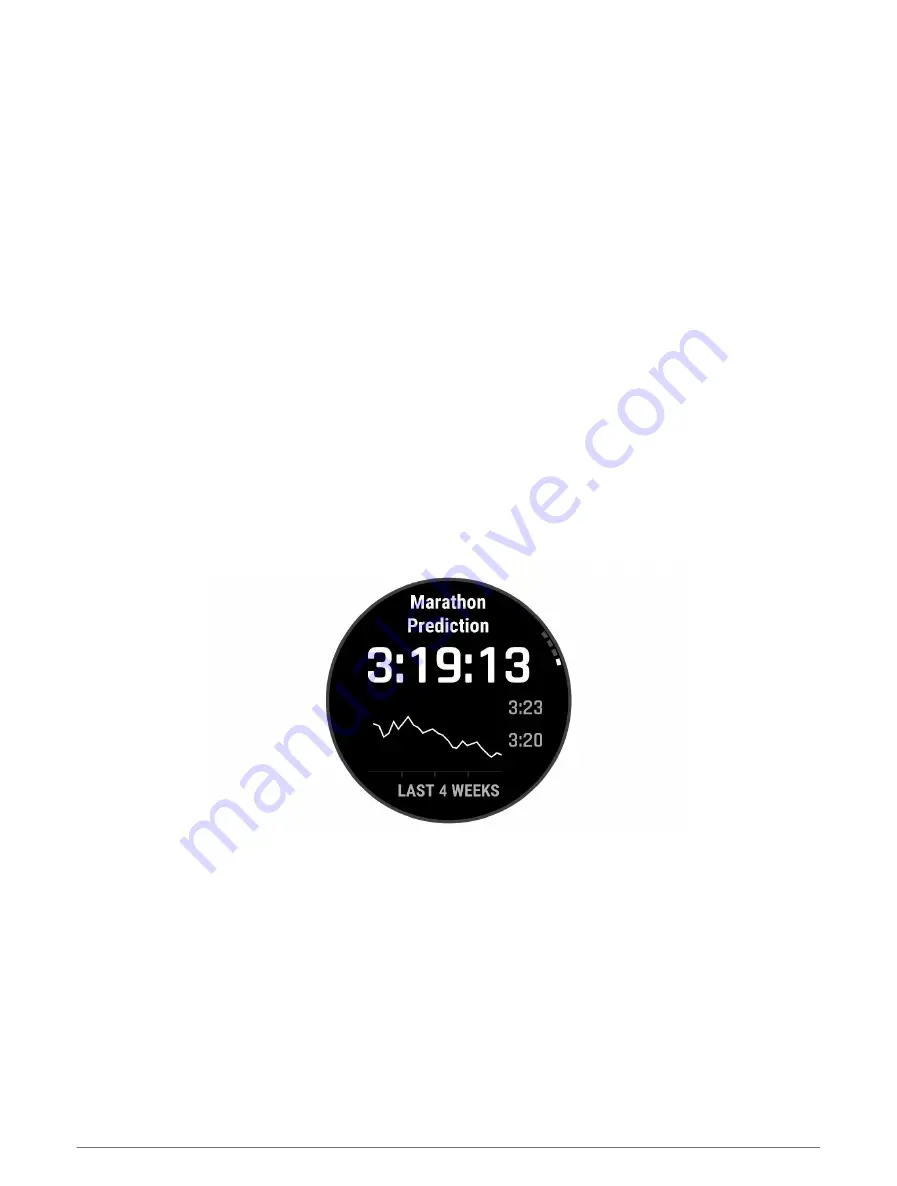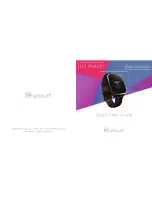
Getting Your VO2 Max. Estimate for Cycling
This feature requires a power meter and wrist-based heart rate or a compatible chest heart rate monitor. The
power meter must be paired with your watch (
Pairing Your Wireless Sensors, page 80
). If you are using a chest
heart rate monitor, you must put it on and pair it with your watch.
For the most accurate estimate, complete the user profile setup (
Setting Up Your User Profile, page 96
) and set
your maximum heart rate (
Setting Your Heart Rate Zones, page 97
). The estimate may seem inaccurate at first.
The watch requires a few rides to learn about your cycling performance.
1 Start a cycling activity.
2 Ride at a steady, high intensity for at least 20 minutes.
3 After your ride, select Save.
4 Press UP or DOWN to scroll through the performance measurements.
Viewing Your Predicted Race Times
For the most accurate estimate, complete the user profile setup (
Setting Up Your User Profile, page 96
), and set
your maximum heart rate (
Setting Your Heart Rate Zones, page 97
).
Your watch uses the VO2 max. estimate (
About VO2 Max. Estimates, page 54
) and your training history to
provide a target race time. The watch analyzes several weeks of your training data to refine the race time
estimates.
TIP: If you have more than one Garmin device, you can specify your primary training device in the Garmin
Connect app, which allows your watch to sync activities, history, and data from other devices (
and Performance Measurements, page 37
).
1 From the watch face, press UP or DOWN to view the performance glance.
2 Press START to view glance details.
3 Press UP or DOWN to view a predicted race time.
4 Press START to view predictions for other distances.
NOTE: The predictions may seem inaccurate at first. The watch requires a few runs to learn about your
running performance.
Appearance
55
















































